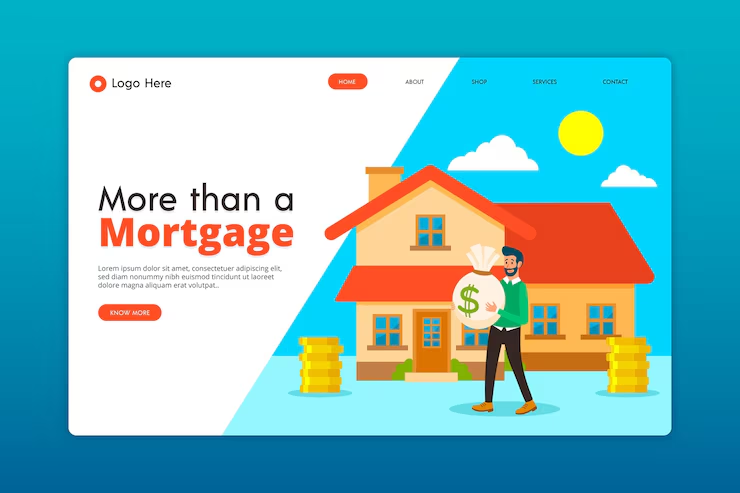
No-Doc Mortgages:
No-doc mortgages, which require little to no income verification, were once a popular choice for some homebuyers seeking quick approval. However, tighter lending regulations and increased risk awareness have made these loans much less common today. While no-doc mortgages have not disappeared entirely, they are now rare and usually come with higher interest rates and stricter qualification criteria.
Some lenders may still offer limited no-doc or low-doc options, but these are generally reserved for borrowers with strong financial profiles or substantial assets. Understanding the current landscape of no-doc mortgages is crucial for anyone considering this type of loan.
This article explores where no-doc mortgages stand in today’s market and what alternatives might be available for borrowers who cannot provide traditional income documentation.
What Are No-Doc Mortgages?
No-documentation mortgages bypass traditional income verification steps. They offer a different underwriting process that appeals to certain borrower profiles. Understanding their structure, differences from regular loans, and typical users clarifies their current market role.
Defining No-Doc and Low-Doc Loans
No-doc mortgages require little to no proof of income or assets from the borrower. Often, they rely on the borrower’s credit history and the property’s value to qualify. Low-doc loans demand minimal paperwork, such as bank statements, rather than full tax returns or pay stubs.
Lenders apply stricter criteria elsewhere to offset the missing documentation. These loans are less common today due to tighter regulations and higher minimum mortgage requirements for 2025, which now emphasize verifiable income. However, some specialized lenders still offer them with higher interest rates or larger down payments.
How No-Doc Mortgages Differ From Traditional Loans
Traditional mortgages require comprehensive income verification, credit checks, and asset documentation. This process confirms a borrower’s ability to repay before approval. In contrast, no-doc loans skip or reduce these steps.
Because of reduced documentation, no-doc mortgages carry higher risk for lenders. This risk often results in higher interest rates and more stringent eligibility rules. Additionally, buyers generally need more significant down payments than the standard 3% to 20% seen with documented loans.
Minimum mortgage requirements in 2025 enforce tighter income standards, limiting where no-doc loans can be used. This makes them less accessible for conventional lending but still an option in niche markets.
Who Typically Seeks No-Doc Mortgages?
No-doc mortgages appeal to self-employed individuals, freelancers, or those with fluctuating income streams. These borrowers may struggle to prove stable income through traditional documentation. Some real estate investors also prefer no-doc loans to speed up property purchases.
Borrowers in this category often accept higher interest rates or larger down payments to use no-doc loans. Those facing complex financial situations, such as recent business startups or contractors, find these loans useful. Still, because of regulatory updates and minimum mortgage requirements for 2025, traditional loans are preferable if income can be verified.
Are No-Doc Mortgages Still Available in 2025?

No-documentation mortgages, once popular, have sharply declined in availability since the financial crisis of 2008. Today, lender policies, market trends, and regulatory scrutiny define their very limited presence.
Current Availability and Lender Policies
In 2025, no-doc mortgages are rare and typically only offered to borrowers with excellent credit and significant assets. Most traditional lenders require comprehensive income and asset verification due to stricter regulations post-2008.
Some niche lenders and private mortgage companies may still provide limited no-doc options, often at higher interest rates to offset increased risk. Jumbo loans, which cover amounts above conforming loan limits, may occasionally allow reduced documentation but not full no-doc approval.
Current mortgage rates, influenced by the federal funds rate rising since the early 2020s, reflect a cautious lending environment. Prime rates and COFI (Cost of Funds Index) also contribute to lenders’ cautious approach.
Trends After the 2008 Financial Crisis
Before 2008, no-doc mortgages were widespread, often fueling risky borrowing. The crisis led to widespread defaults, prompting tighter regulations like the Dodd-Frank Act. These rules increased lender accountability and reinforced the need for income verification.
Mortgage rates have fluctuated since the 1970s but stabilized lower post-crisis, encouraging safer lending practices. Despite some rate increases post-2020, lenders remain vigilant about borrower documentation to prevent a repeat of mortgage-related defaults.
Alternatives to No-Doc Loans Today
Borrowers unable or unwilling to provide full documentation can consider stated income loans, which require self-reported income verified by assets or credit, but these are less common. Asset-depletion loans allow lenders to base eligibility on liquid assets rather than income.
Another alternative is the use of jumbo mortgage loans, which sometimes allow relaxed documentation for high-net-worth individuals, but these come with higher rates and stricter underwriting. Compared to no-doc loans, these alternatives prioritize some verification to meet regulatory standards.
How No-Doc Mortgages Work
No-documentation mortgages allow borrowers to secure loans without providing traditional proof of income or assets. Lenders rely more heavily on factors like credit score, down payment size, and property value. These loans often work differently from typical mortgages and relate closely to options like home equity lines of credit (HELOCs).
Application and Approval Processes
The application process for no-doc mortgages skips submitting pay stubs, tax returns, or bank statements. Instead, lenders focus on the borrower’s credit report, debt-to-income ratio estimates, and equity in the home. Approval often depends on verifying the property’s value through an appraisal.
Lenders may require a larger down payment, sometimes 20% or more, to lower their risk. Interest rates are usually higher compared to fully documented loans, reflecting the increased risk.
The process can be faster since fewer documents are reviewed. However, some lenders have tightened standards after prior abuses of no-doc loans. Borrowers should expect stricter scrutiny of credit and collateral.
Typical Borrower Requirements
Borrowers typically need a strong credit score, often above 700, to qualify. They must demonstrate significant home equity or a large down payment—frequently at least 20%. The property itself is a critical factor in approval likelihood.
Lenders focus on the loan-to-value (LTV) ratio, often requiring it to be 80% or below. This protects the lender if the borrower defaults. Borrowers with complicated income reporting or self-employed individuals might benefit most from these loans.
No-doc loans are less common today but remain available for certain profiles. They usually suit borrowers who prefer speed or who have difficulty producing traditional income proof but have solid equity or credit.
Types of No-Doc and Low-Doc Mortgages

No-documentation and low-documentation mortgages come in distinct forms, each with unique requirements and benefits. These loan types cater to borrowers who may have irregular income, self-employment, or limited paperwork but still seek financing options beyond traditional loans.
Stated Income Loans
Stated income loans allow borrowers to declare their income without providing traditional verification like pay stubs or tax returns. Lenders rely primarily on the borrower’s stated income and credit profile to assess eligibility. These loans often carry higher interest rates due to increased lender risk.
They are common among self-employed individuals or those with complex financial situations. However, stricter underwriting and regulatory oversight have limited their availability since the 2008 financial crisis. FHA loans do not typically include stated income options but may allow limited documentation under special conditions.
Asset-Based Loans
Asset-based loans are approved based on the borrower’s assets rather than income. Lenders assess savings, investments, or other financial holdings to determine repayment ability. This approach suits borrowers with substantial assets but irregular or undocumented income.
These loans often require detailed asset statements and may involve higher down payments. Asset-based lending is less common for FHA loans but can be relevant for some construction loans, where asset verification complements the project financing.
Bank Statement Mortgages
Bank statement mortgages use bank transaction records to verify income instead of traditional pay stubs or tax returns. Lenders analyze 12-24 months of deposits and withdrawals to estimate monthly income. This method suits self-employed borrowers or gig economy workers with non-traditional earning patterns.
Compared to stated income loans, bank statement mortgages offer a more transparent assessment of financial activity. They usually require a thorough review of business expenses and personal spending. Some lenders bundle this approach with low-doc options but it generally demands strong credit and higher reserves.
Pros and Cons of No-Doc Mortgages

No-doc mortgages offer quick approval and loosened paperwork but come with significant risks. Borrowers should weigh flexibility against the potential for higher costs and stricter lender scrutiny.
Advantages for Borrowers
No-doc mortgages allow borrowers to bypass traditional income verification, which speeds up the loan process. This benefit is especially valuable for self-employed individuals or those with irregular income sources who struggle to document earnings.
Borrowers can secure funding even during uncertain economic periods, such as times of recession fears, when banks tighten standards. In states with higher median home prices, no-doc loans may offer a faster route to homeownership for qualified applicants.
Some lenders offer competitive interest rates despite the lack of documentation, though this depends on creditworthiness and market conditions. They also reduce paperwork burdens, making homebuying less stressful.
Risks and Drawbacks
No-doc mortgages generally come with higher interest rates and fees due to increased risk for lenders. They are more likely to require larger down payments or stricter credit score requirements.
Without income verification, borrowers risk overborrowing, which can lead to financial strain if economic conditions worsen. This risk is heightened in markets with rising median home prices, where the loan amount may be substantial.
Lenders may also impose stricter terms or early repayment penalties. Additionally, no-doc mortgages have become less common due to regulatory changes, so fewer options are available, limiting borrower choice.
Borrowers should carefully consider if the convenience outweighs the financial risks before proceeding.
Alternatives to No-Doc Mortgages
Borrowers seeking alternatives to no-documentation mortgages must navigate options that balance income proof requirements with lending flexibility. Two common alternatives offer distinct approaches to verifying income and assessing creditworthiness.
Full Documentation Loans
Full documentation loans require borrowers to provide comprehensive proof of income, assets, and employment. This typically includes recent pay stubs, tax returns, bank statements, and W-2 forms. Lenders use this information to thoroughly assess the borrower’s ability to repay the loan.
These loans generally offer lower interest rates and more favorable terms than no-doc mortgages, reflecting the reduced risk for lenders. They suit borrowers with stable, verifiable income sources seeking competitive mortgage rates.
Because full documentation loans demand more paperwork, they can take longer to process. However, they remain the gold standard for conventional mortgage lending in 2025, especially as investors in the mortgage market prefer transparent borrower profiles.
Non-QM Mortgages
Non-QM (non-qualified mortgage) loans offer flexibility for borrowers who cannot meet standard documentation requirements. These include self-employed individuals, gig workers, or those with irregular income streams.
Lenders may accept alternative income verification methods such as bank statement analysis, asset-based lending, or profit-and-loss statements. Interest rates on Non-QM loans are typically higher due to increased risk but still competitive compared to historical no-doc offers.
Non-QM mortgages have gained traction in 2025 as a bridge between rigid full documentation loans and the near-obsolete no-doc loans. They provide a legal and regulated pathway for borrowers with income verification challenges without resorting to predatory lending.
Qualification Criteria and Lender Considerations
Lenders carefully evaluate borrowers’ financial profiles even when income documentation is minimal or absent. Key factors include the borrower’s creditworthiness and the size of the down payment, which both influence loan approval chances and terms.
Credit Score Requirements
Credit scores remain a critical element in no-doc mortgage approvals. Typically, lenders require scores above 700 to mitigate higher risks, though some may accept scores as low as 650 with stricter loan terms. The borrower’s score reflects their payment history, outstanding debts, and recent credit activity.
Improving credit scores by 100 points in 30 days is possible but challenging and usually involves paying down balances, correcting errors on credit reports, and limiting new credit inquiries.
For context, auto loans usually require scores of 620 or higher to secure favorable rates, showing that mortgage lenders set higher benchmarks for no-doc loans due to increased uncertainty.
Down Payment Expectations
Down payments for no-doc mortgages are generally larger than those for traditional loans. Lenders often ask for at least 20% to reduce the loan-to-value ratio, minimizing their risk exposure.
Some lenders may require 25% or more if credit scores are borderline or if the borrower’s financial history is not fully verified. A substantial down payment can also help offset higher interest rates common with no-doc loans.
Borrowers who can afford more upfront cash increase their chances of approval and may negotiate better loan conditions despite limited documented income.
Costs and Rates Associated With No-Doc Mortgages

No-doc mortgages generally carry higher costs compared to traditional loans due to the increased risk lenders take on. Borrowers can expect both elevated interest rates and additional fees that reflect this.
Interest Rate Premiums
No-doc mortgages often come with interest rates that are 0.5% to 2% higher than standard documented loans. This premium compensates lenders for the lack of verified income and financial information.
For comparison, the average credit card interest rate in America today hovers around 18-24%, which is typically much higher than mortgage rates, but no-doc rates can approach or even exceed the upper end of traditional mortgage rates depending on creditworthiness.
Borrowers with strong credit may receive rates closer to the lower end of the no-doc range. Those with weaker credit profiles will face larger premiums or may not qualify at all.
Associated Fees
No-doc mortgage borrowers often encounter higher upfront fees such as loan origination fees and underwriting charges. These can total between 1% and 3% of the loan amount.
Additional fees may include more substantial prepayment penalties or application fees not commonly seen in traditional mortgages. Some lenders also require compensation for increased verification risks through higher processing costs.
It is important for borrowers to compare these fees to costs associated with other credit products, such as those seen with the best credit cards of May 2025, which sometimes offer low or waived annual fees but with higher ongoing interest rates.
No-Doc Mortgages vs. Other Home Loan Options

No-doc mortgages require minimal paperwork, focusing on creditworthiness rather than income verification. In contrast, other home loan options involve detailed documentation but offer benefits like lower interest rates or government backing.
Conventional Loans
Conventional loans demand full income verification, credit checks, and documentation of assets. They typically require a down payment of at least 5%, with better rates offered to borrowers with strong financial profiles.
These loans are not insured by the government. Lenders assess risk through strict underwriting standards, making it harder for self-employed or freelance buyers to qualify without traditional income proof.
Real estate agent fees and commissions usually factor into the closing costs of conventional loans. Buyers should also consider property type, as lenders may have different terms for condos versus townhouses based on association rules or market stability.
FHA and VA Loans
FHA loans are backed by the Federal Housing Administration and allow for lower credit scores and down payments as low as 3.5%. They require full documentation but have relaxed underwriting standards compared to conventional loans.
VA loans are available to eligible veterans and active service members. They require no down payment or private mortgage insurance but still necessitate thorough income verification.
Both programs provide consumer protections but are not no-doc options. These loans can ease entry into homeownership for first-time buyers but do not eliminate the need for formal financial proof.
Jumbo Loans
Jumbo loans finance properties that exceed conforming loan limits. They require extensive income and asset documentation due to higher loan amounts.
Because they carry greater risk, jumbo loans have stricter credit score requirements and often require larger down payments, sometimes 20% or more. Interest rates may be higher, reflecting the loan’s size and risk.
Buyers considering condos or townhouses should know that jumbo loan approval depends on the property’s evaluation and the decision of lenders regarding association fees and structure management. This adds layers of complexity compared to no-doc mortgages.
Regulations and Legal Considerations

No-documentation mortgages face strict oversight under current laws and guidelines. These rules limit their availability and enforce borrower verification to reduce risk.
Dodd-Frank Act and Lending Restrictions
The Dodd-Frank Act, enacted in 2010, imposed strong limits on no-doc mortgages. It requires lenders to verify a borrower’s ability to repay through income, assets, and credit history.
The Act also introduced the Qualified Mortgage (QM) rule, which restricts loan features that increase default risk. No-doc loans typically fail QM criteria because they lack income verification.
Additionally, lenders must consider federal income tax rates and bonus tax rules since borrowers’ taxable income, including bonuses, affects repayment ability. The 2025 bonus tax rate remains an important factor for self-employed or commission-based applicants under this scrutiny.
State and Federal Guidelines
States often have additional rules that further restrict or ban no-doc loans. For example, California and New York require full income documentation for most residential mortgages.
Federal agencies like the Consumer Financial Protection Bureau (CFPB) regularly update mortgage guidelines. These updates reflect changes in tax brackets and income reporting, indirectly impacting no-doc loan policies.
Lenders must comply with both federal and state regulations, creating a complex landscape. Borrowers in higher tax brackets may face stricter verification, as higher incomes trigger closer tax and income scrutiny.
When to Consider a No-Doc Mortgage
No-doc mortgages suit specific financial situations and borrower types. They can offer speed and convenience but come with trade-offs related to approval criteria and interest rates. Understanding who benefits most and when these loans make sense is critical.
Ideal Borrower Profiles
No-doc mortgages are often suitable for self-employed individuals or freelancers who have inconsistent income streams. Traditional loan applications may require detailed tax returns, which these borrowers might not have in a standard format.
Investors purchasing rental properties without planning to live in them may also fit this profile. They typically have solid cash flow or assets but prefer to avoid the paperwork of income verification.
Borrowers with substantial savings or assets but limited recent paystubs may use no-doc loans to leverage their financial position quickly. However, these loans usually come with higher interest rates due to increased lender risk.
Situations Where No-Doc Loans Make Sense
Quick property purchases, particularly in competitive markets, can benefit from no-doc mortgages. The faster approval process can help secure deals that require immediate financing.
Certain business owners or real estate investors seeking to combine simple ways to make $100 fast or generate additional income streams might use no-doc loans to fund opportunities quickly.
In cases where borrowers want a bridge loan while waiting for other funds to clear, a no-doc loan can provide interim financing. It is also useful for those pursuing 50 passive income ideas to help generate money in 2025, as flexibility in loan documentation allows faster access to capital.




